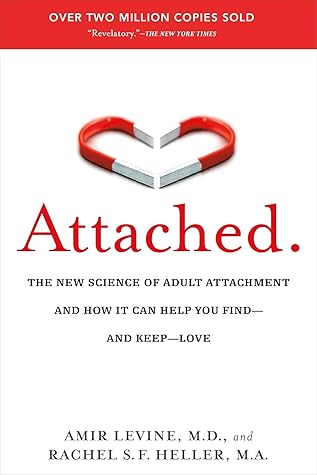More on this book
Community
Kindle Notes & Highlights
by
Amir Levine
Read between
January 10 - February 5, 2023
“attachment styles,” or manners in which people perceive and respond to intimacy in romantic relationships, which parallel those found in children: Secure, Anxious, and Avoidant.
Attachment theory is based on the assertion that the need to be in a close relationship is embedded in our genes.
Getting attached means that our brain becomes wired to seek the support of our partner by ensuring the partner’s psychological and physical proximity.
Attachment principles teach us that most people are only as needy as their unmet needs.
Numerous studies show that once we become attached to someone, the two of us form one physiological unit. Our partner regulates our blood pressure, our heart rate, our breathing, and the levels of hormones in our blood. We are no longer separate entities. The emphasis on differentiation that is held by most of today’s popular psychology approaches to adult relationships does not hold water from a biological perspective.
Protest behavior is any action that tries to reestablish contact with your partner and get their attention.
avoidant individuals actually prefer anxiously attached people.
anxious women are more likely to date avoidant men.
Because you are used to equating an activated attachment system with love, you conclude that this can’t be “the one” because no bells are going off.
Studies show that belief in self-reliance is very closely linked with a low degree of comfort with intimacy and closeness.


